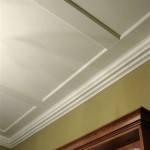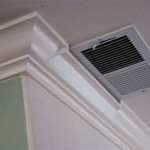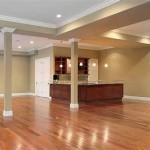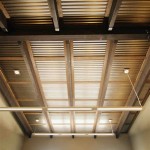How To Craft a Stunning Ceiling Medallion
Ceiling medallions, traditionally crafted from plaster or wood, add a touch of elegance and architectural interest to any room. These decorative elements typically surround light fixtures, enhancing the visual appeal of the ceiling. While pre-made medallions are readily available, creating a custom medallion offers a unique opportunity to personalize the décor and achieve a specific aesthetic. This article provides a detailed guide on how to construct a beautiful ceiling medallion without relying on stencils, allowing for complete design freedom and customization.
The process involves carefully planning the design, selecting appropriate materials, and employing a series of techniques to build up the medallion layer by layer. This method allows for intricate details and customized dimensions, resulting in a bespoke piece that complements the room's existing style and enhances its overall ambiance. This article will cover design considerations, material selection, construction techniques, and installation procedures.
I. Design and Planning
Before embarking on the construction of a ceiling medallion, meticulous planning is crucial. The design phase dictates the overall aesthetic and ensures the finished product harmonizes with the room's existing style. Several factors warrant careful consideration during this stage.
A. Style and Theme: The overarching design should complement the room's existing architectural style. For instance, a Victorian-era home might benefit from a medallion with ornate floral motifs and intricate detailing. Conversely, a modern minimalist space may call for a simpler, geometric design with clean lines. Consider the existing mouldings, cornices, and other architectural details to ensure cohesion.
B. Size and Proportion: The size of the medallion should be proportionate to the size of the room and the fixture it will surround. A medallion that is too large can overwhelm the space, while one that is too small may appear insignificant. As a general guideline, the diameter of the medallion should be approximately one-third to one-half the width of the room. For a larger room with a high ceiling, a larger medallion can be used. Consider the size and shape of the light fixture that will be centered within the medallion. The medallion should enhance, not overshadow, the fixture.
C. Design Complexity: The complexity of the design should be carefully considered, taking into account personal skill level and the time commitment involved. Intricate designs with numerous layers and fine details require more patience and expertise. A simpler design, while less elaborate, can be equally effective if executed with precision and attention to detail. Initially, a simple design provides a good starting point. As skills improve, designs can be scaled to include more complex elements.
D. Sketching and Mock-ups: Before commencing construction, create detailed sketches of the planned medallion. These sketches will serve as a visual guide throughout the building process. Consider creating a scaled-down mock-up of the design using cardboard or foam core to visualize the final product and identify any potential issues. This helps to refine the design before committing to more permanent materials.
II. Material Selection and Preparation
The choice of materials plays a significant role in the durability, appearance, and ease of construction of the ceiling medallion. Consider the following options and their respective properties.
A. MDF (Medium-Density Fiberboard): MDF is a versatile and affordable material that is well-suited for creating ceiling medallions. It is smooth, stable, and easy to cut and shape. MDF also accepts paint and other finishes readily, allowing for a wide range of aesthetic options. When working with MDF, it is essential to wear a dust mask to avoid inhaling the fine particles produced during cutting and sanding.
B. Wood: Solid wood, such as pine or poplar, can be used to create a more traditional and durable medallion. However, wood is more expensive than MDF and requires more skill to work with. Choose a lightweight wood to minimize the weight of the medallion, especially for larger designs. Ensure the wood is properly seasoned and free from knots or defects.
C. Lightweight Plaster: Lightweight plaster compounds are available that can be molded and shaped to create intricate details. These compounds are relatively easy to work with and can be sanded smooth once dry. However, plaster can be brittle and may require reinforcement, especially for larger medallions. Always follow the manufacturer's instructions when mixing and applying plaster compounds.
D. Adhesives and Sealants: Select appropriate adhesives for bonding the various layers of the medallion. Construction adhesive or wood glue are suitable options for bonding MDF or wood. For plaster components, use a suitable adhesive designed for plaster or gypsum. Use a paintable sealant to fill any gaps or imperfections in the finished medallion.
E. Primers and Paints: Use a high-quality primer to seal the surface of the medallion and provide a good base for the paint. Choose a paint that is compatible with the chosen material and provides the desired finish. Consider using multiple coats of paint for durability and a professional-looking finish.
III. Construction Techniques
The construction of the ceiling medallion involves building up the design layer by layer, using a combination of cutting, shaping, and adhering techniques. Precision and attention to detail are essential for achieving a professional results.
A. Creating the Base Layer: The base layer of the medallion serves as the foundation for the entire structure. This layer is typically a simple circular shape cut from MDF or wood. Use a compass or a circle cutter to create a perfectly round base. The diameter of the base should correspond to the overall size of the planned medallion. Ensure the edges of the base are smooth and free from splinters or imperfections.
B. Building Up the Design: Once the base layer is prepared, begin building up the design by adding successive layers of MDF, wood, or plaster. Cut or shape each layer according to the planned design. For intricate details, consider using a router or a carving tool. Use sandpaper to smooth the edges and surfaces of each layer before adhering it to the base. Apply adhesive evenly to the back of each layer and firmly press it onto the base or previous layer. Use clamps or weights to hold the layers in place while the adhesive dries.
C. Creating Relief and Texture: To add dimension and visual interest, incorporate relief and texture into the design. This can be achieved by layering different thicknesses of material or by using carving tools to create raised or recessed areas. Experiment with different techniques to achieve the desired effect. Consider using decorative trims or moldings to add further detail. These can be readily available at most home improvement stores.
D. Shaping and Contouring: Use sandpaper, rasps, and files to shape and contour the various layers of the medallion. Create smooth transitions between different levels and soften any sharp edges. Pay close attention to the overall form and ensure it is visually appealing. Use a sanding block to maintain a consistent surface and avoid creating unwanted grooves or irregularities.
E. Filling and Sanding: Once the medallion is fully assembled, fill any gaps or imperfections with paintable sealant. Allow the sealant to dry completely before sanding it smooth. Use progressively finer grits of sandpaper to achieve a flawless surface. Remove all dust and debris before priming and painting the medallion.
IV. Finishing and Installation
The final steps involve finishing the medallion and installing it on the ceiling. These steps require careful attention to ensure a secure and aesthetically pleasing installation.
A. Priming and Painting: Apply a coat of high-quality primer to the entire medallion. This will seal the surface and provide a good base for the paint. Allow the primer to dry completely before applying the paint. Apply multiple coats of paint, allowing each coat to dry thoroughly before applying the next. Consider using a spray gun for a smooth and even finish. If using a brush, use long, even strokes and avoid applying too much pressure.
B. Adding Decorative Finishes: Consider adding decorative finishes to enhance the appearance of the medallion. This could include applying a glaze to highlight the details, adding metallic accents, or using a faux finish to mimic the look of aged plaster. Experiment with different techniques to achieve the desired effect. Apply these finishes after the base coat of paint has dried completely.
C. Preparing for Installation: Before installing the medallion, turn off the power to the light fixture at the circuit breaker. Carefully remove the light fixture from the ceiling. Identify the ceiling joists or studs to ensure the medallion is securely attached. If necessary, install additional blocking between the joists to provide a solid mounting surface. Clean the ceiling surface thoroughly before installing the medallion.
D. Installing the Medallion: Apply a bead of construction adhesive to the back of the medallion. Carefully position the medallion on the ceiling, centering it around the electrical box. Press the medallion firmly against the ceiling to ensure good adhesion. Use screws to secure the medallion to the ceiling joists or blocking. Countersink the screws and fill the holes with wood filler or spackle. Allow the adhesive and filler to dry completely before sanding and painting the screw holes.
E. Reinstalling the Light Fixture: Once the medallion is securely installed, reinstall the light fixture. Ensure all electrical connections are properly made and that the fixture is securely attached to the ceiling. Turn the power back on at the circuit breaker and test the light fixture. Inspect the installation to ensure everything is secure and aesthetically pleasing. Make any necessary adjustments to finalize the installation.

How To Make A Beautiful Lace Diy Ceiling Medallion On Budget From House Home

How To Make A Beautiful Lace Diy Ceiling Medallion On Budget From House Home

Decorative Stencil Georgian Ceiling Medallion Wall And Stencils For Diy Home Decor Classical Designs

Ceiling Stencil Medallion Elegant Classical Stencils For Home Decor Wall Medallions

Ceiling Medallion Stencils Custom Design Paint Modello Designs

Stenciled Ceiling Medallion

Ceiling Stencils Arabesque Medallion

Ceiling Medallion Stencils Custom Design Paint Modello Designs

Pin Page

Decorative Stencil Marie Antoinette Ceiling Medallion Classic French Decor
Related Posts








